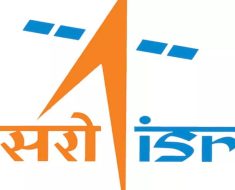
Quantitative calculation of pollution source contributions using the APCS-MLR receptor model revealed R2 values of 0.906, 0.997, 0.804, 0.916, 0.894, and 0.662 for Cd, Zn, Cu, Cr, Ni, and Pb, respectively. Except for Pb, all other HMs had R2 values greater than 0.8, and the ratios of predicted to actual concentrations for each heavy metal were close to 1 (Table S1), indicating a high accuracy in the source analysis results.
The contributions of each factor to the heavy metal elements are shown in Figure 3, including contributions from three pollution sources determined by PCA and one unknown pollution source. The contribution rates for PCA1, PCA2, PCA3, and the unknown source were 55.48%, 24.44%, 8.91%, and 11.86%, respectively.
The soil HMs Cu, Cr, Pb, and Ni in the study area were primarily influenced by natural factors, with contribution rates of 73.67%, 72.60%, 57.55%, and 73.59%, respectively. Additionally, the PCA1 explained the sources of some Zn and Cd in the study area. Studies have indicated that weathering of parent materials, such as carbonate rocks, can lead to the enrichment of Cd in surrounding soils [38]. Wang et al. found that natural parent materials contribute to Zn in the soils of the Huainan Luan Mining Area [39]. The PCA2, representing mining activities combined with mixed sources of coal gangue deposition, had the highest contribution rate to Cd, accounting for 68.52%. Furthermore, it contributed to the other HMs Zn, Cu, Cr, Ni, and Pb by 11.74%, 20.17%, 2.60%, 36.42%, and 7.20%, respectively. Mining activities can have various adverse effects on the surrounding environment and serve as a source of pollution for multiple HMs, including Zn, Cu, Cr, and Pb [40]. This explanation aligns well with the results of the PCA2 source contribution analysis in this study. The PCA3, representing the pollution source of agricultural activities, had a higher contribution to Zn, accounting for 37.18%. Additionally, the PCA3 had lower contributions to the other five HMs. The use of pesticides and fertilizers can lead to slight enrichment of Cd, Cu, Cr, and Ni in the soil [41,42]. Huainan Panji is one of the important power hubs, and coal-fired power generation may lead to the migration of HMs from coal to the surrounding soil. In addition, there is a provincial road in the study area with frequent traffic activities. Based on actual investigations and data collection around the study area, the unknown source might be related to coal combustion [43,44,45], automobile exhaust emissions [46,47,48], tire wear [49], and household waste (such as batteries) [50], which are potential sources of HMs according to previous studies.




![Optimizing Distributed Training on Frontier for Large Language Models. (arXiv:2312.12705v1 [cs.DC]) Optimizing Distributed Training on Frontier for Large Language Models. (arXiv:2312.12705v1 [cs.DC])](https://aigumbo.com/wp-content/uploads/2023/12/arxiv-logo-fb-235x190.png)